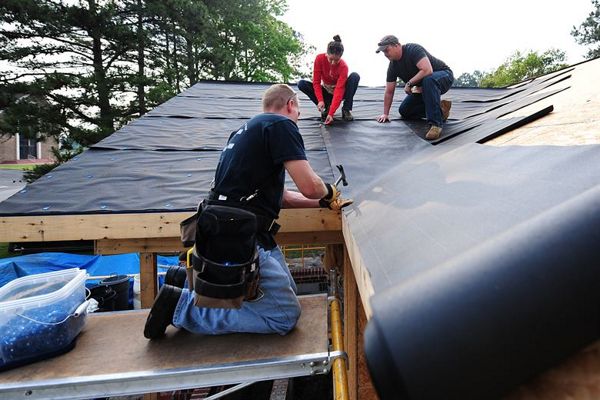
It's a big problem that most Littleton, CO homeowners face nowadays; their roof has had no maintenance services. Therefore, it's an enormous pain to deal with roofing leaks by yourself. However, you won't need a roofer if you wish to administer a temporary respite that prevents water damage.
With these simple roof repairs, you won't need to contact Littleton, CO roofers you can trust or have them into your home. Additionally, roofing material suppliers have these materials on hand to provide to you in no time.
Tarpaulin material is seamless and does not puncture easily, making them perfect as a large cover over your roof. One major problem in fixing roofing leaks is locating the leak source. With a large cover over your roof, you can be sure you've already covered the leak source and resolved the possible water damage issue in your attic.
You can purchase portable caulking applicants from reliable suppliers online or locally. You can use a small, thin wooden plank to apply the caulk to attic areas you've found the leaks. Make sure to apply them during a non-rainy day to ensure they dry properly. Place an asphalt shingle over the leak spot to ensure it doesn't cause any water damages.
Grizzly Tarps has excellent instructions on how to install roofing tarpaulins for homeowners. Read more about it below.
Clean the debris
First things first – make sure to remove all debris from your roof. This helps you easily find the leak source. Look out for broken panels, torn or missing shingles, out of place tiles, and dented vents.
Measure the area to be covered with a tarp
The size of the tarp you are using will depend on the measurements of the area to be repaired. There are all kinds of sizes available to suit your needs like 12×16 feet silver tarps or a larger sized 20×30 feet durable tarps. Partially unroll the tarp to cover the damaged section. Allow at least 4 feet overhang past the peak and let the rest hang off the eave.
Create an anchor board
Using cap nails, attach the peak end of the tarp to a 2 x 4. Remember to place the 2 x 4 against the roof so it won’t collect water or debris. The board should be at least 2 feet longer than the width of the tarp. Next, wrap the silver or the blue tarps around the board. Secure the board to the roof with a screw to serve as the anchor. To prevent tearing, you can attach another 2 x 4 on top of your anchor board.
Sandwich the tarp
Attach 2 x 4 boards to both edges of the tarp, just on the peak side perpendicular to the anchor board. This will hold the tarp tight to the roof and keep the water out.
If you need top-notch roofing repairs once the self-isolation period ends, you can always count on us at Roper Roofing. Contact us today to learn more about everything that we can achieve with you.